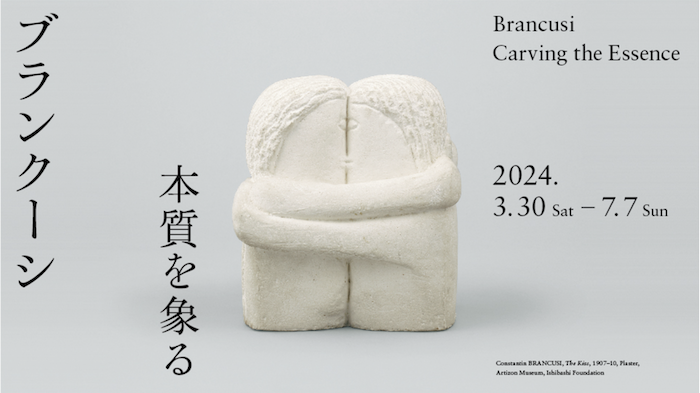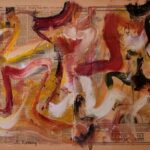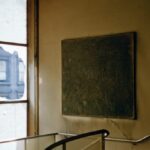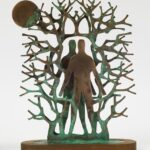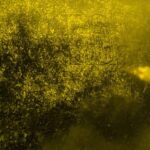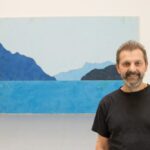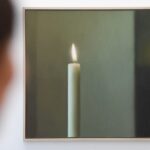Editor’s Note: This story originally appeared in Breakfast With ARTnews, our daily newsletter about the art world. Sign up here to receive it every weekday.
References: this article is based on content originally published by
Sarah Douglas on ARTnew. You can read the full article here.
The flight to Japan from art world centers like New York, London, and Paris isn’t exactly short. Those that do make the trip this year, however, won’t be disappointed with the art offerings, which span modern to contemporary. This week, during the Tokyo Gendai fair, the shows to see in the city are dominated by strong sculpture.
References: this article is based on content originally published by
Sarah Douglas on ARTnew. You can read the full article here.
First up on the itinerary: the Artizon Museum’s exhibition of Constantin Brancusi, the first proper survey of the Romanian-born sculptor’s work in Japan.
References: this article is based on content originally published by
Sarah Douglas on ARTnew. You can read the full article here.
Brancusi’s The Kiss has it all: it’s cute, it’s romantic, it’s profoundly Instagrammable. Made at the turn of the twentieth century, it also happens to mark the starting line of modern sculpture: from The Kiss’s economy of means, the rest was a sprint, from Picasso to Moore to Giacometti all the way up through Eva Hesse and Rachel Whiteread. So it’s no surprise that the Kiss is situated front and center at the Artizon show.
References: this article is based on content originally published by
Sarah Douglas on ARTnew. You can read the full article here.
The exhibition neatly charts Brancusi’s wiggling free of Rodin’s influence and taking flight: the show culminates in a section dedicated to the form of the bird, represented by the rightly famous Bird in Space, an elegant skyward swipe of bronze. There are also photographs, and a section dedicated to recreating Brancusi’s Montparnasse studio. Purists will gripe about the large number of posthumous casts but, for a lay audience, the show serves as a decent dose of beauty and a fine introduction to a titan of modern sculpture.
References: this article is based on content originally published by
Sarah Douglas on ARTnew. You can read the full article here.
If Brancusi conceived of the bird, Alexander Calder taught it to fly. Over at the Azabudai Hills Gallery is a compact survey of the master of the mobile—done in collaboration with Pace Gallery , whose huge new space is upstairs—assembled by the artist’s tireless grandson Sandy Rower, head of the Calder Foundation. The title? “Calder: A Japanese Effect” Why not. We’ve already had Calder paired with artists from Giacometti to Miro to Fischli and Weiss. As Rower has shown us over the past two decades, Calder is indeed the gift that keeps on giving.
References: this article is based on content originally published by
Sarah Douglas on ARTnew. You can read the full article here.
There are some real gems in this exhibition, including an unexpected series of drawings of animals in motion: there are no other words for these than just perfect, especially the cats, with their movements captured in just a few strokes of ink. A star of this particular show, though, is Japanese architect Stephanie Goto, who did the exhibition design. A black mobile set against a black ceiling? Unexpectedly brilliant. Other works are situated against a wall covered in large black sheets of paper, another effect that shouldn’t work but does.
References: this article is based on content originally published by
Sarah Douglas on ARTnew. You can read the full article here.
You may think of Brancusi again when you visit “MOON,” an exhibition of Los Angeles-based British artist Thomas Houseago at BLUM , the gallery formerly known as Blum & Poe. Best known as a sculptor, Houseago has several pieces in the show that recall the Romanian master, one of them an abstract egg-like shape set on a rough-hewn wooden plinth, and the other an owl in his signature technique of drawing in plaster.
References: this article is based on content originally published by
Sarah Douglas on ARTnew. You can read the full article here.
For my money, the owl is the best piece in this show, displayed silhouetted against a large window. Like Ann Craven’s paintings of birds, this piece seems to capture the essence of the animal. Houseago has recently branched out into paintings, and they are dramatic and rich with color, if somewhat less successful than the 3D work. A large painting of an owl, for instance, is accomplished, but seems only to highlight the less-is-more brilliance of the sculpture.
References: this article is based on content originally published by
Sarah Douglas on ARTnew. You can read the full article here.
After seeing the work of those three male sculptors, you will have to put on a different hat to experience the work of Rei Naito. Think of Henry James’s famous dictum and “try to be one of those on whom nothing is lost.” Because if you are not paying attention in the various displays of Naito’s work throughout the enormous Tokyo National Museum, you are going to lose quite a bit.
References: this article is based on content originally published by
Sarah Douglas on ARTnew. You can read the full article here.
Naito, who was born in Hiroshima in 1961 and represented Japan at the 1997 Venice Biennale, works in a minimalist tradition, but not in the sense of, say, Donald Judd. There is nothing heavy about her work. Instead, objects ranging from small to miniscule—pompoms, balloons, pebble-like blown glass bubbles, animal figurines, bones, little mirrors, a jar of water—are deployed in ways that demand meditation on the part of the viewer. In one long, narrow gallery of the museum, such things are arrayed against slate gray walls and under dimmed lights: the effect is of being inside the artist’s imagination. Along one wall is white fabric inside a glass display case, looking like a snowbank. What amazes about Saito’s work is just how close it gets to twee without ever stepping over that line.
References: this article is based on content originally published by
Sarah Douglas on ARTnew. You can read the full article here.
In the 1980s, Naito said of a particular artwork of hers that she was attempting to “create a spiritual place of her own.” The same might be said for another Japanese artist of Naito’s generation who works in a very different mode. Mariko Mori became known in the nineties for photographs of herself posed in urban environments in Japan, dressed up as various stereotypes of a Japanese woman. But over the past two decades she has been working in a spiritual mode, right down to merging her art with her living quarters.
References: this article is based on content originally published by
Sarah Douglas on ARTnew. You can read the full article here.
The project currently on view at SCAI The Bathhouse is complex, involving crystals and a spiritualistic painting, and is connected to Mori’s artwork Peace Crystal (2016-2024), which is currently on view outside a palazzo in Venice during this year’s Biennale. At SCAI, Mori appears in augmented reality (you need to make an appointment) as a priestess whose attire draws on both Japan’s history and on the kind of futuristic effects found in video games. Like Saito, Mori has crafted an entire immersive world, one you can only enter in person.
References: this article is based on content originally published by
Sarah Douglas on ARTnew. You can read the full article here.
For Theaster Gates, too, as a wall text explains in the Chicago artist’s first solo exhibition in Japan, at the Mori Art Museum , making art is a spiritual enterprise. Gates prepared for the Mori show by working with potters in Tokoname, which he had first visited in 2004, and came up with the concept of “Afro-Mingei,” a reference to the word for Japanese folk art, a movement that was overshadowed by the introduction of Western art to Japan in the 19th century. (“[W]hat is key for me is the way in which Mingei honors makers native to a place and resists external impositions of cultural identity,” Gates explains in wall text in the show.)
References: this article is based on content originally published by
Sarah Douglas on ARTnew. You can read the full article here.
The results are displayed in the final section of this survey of Gates’ work and they are by far the highlight. After an elaborate timeline that traces Gates’ links with Japan comes an enormous display case holding ceramics by Tokoname potter Koide Yoshihiro, who died in 2022, and an enormous wooden bar—stools and all—that fronts a set of shelves holding binbo tokkuri bottles (sake bottles) made in collaboration with Japanese potter Tani Q. There’s also a terrific soundtrack (Busta Rhymes was on when I visited) and a spinning disco ball in the shape of an iceberg.
References: this article is based on content originally published by
Sarah Douglas on ARTnew. You can read the full article here.
